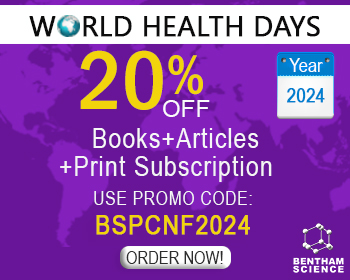Abstract
Hypericin, a naturally occurring pigment, is found in certain species of plants from the genus Hypericum, the most common of which is Saint Johns Wort (Hypericum perforatum). Recent interest in hypericin is provoked by the discovery that it possesses extremely high toxicity towards certain viruses notably the class of enveloped viruses that includes human immunodeficiency virus (HIV) and toward tumors, and that this toxicity absolutely requires light. Consequently, a detailed understanding of the interaction of hypericin with cellular components (membranes, proteins, nucleic acids) and with light is of fundamental biological importance. The antiviral and antineoplastic activities of hypericin and its derivatives and its mode of action have been widely studied, in the last two decades. This review is focused on the results obtained in the study of hypericin heteroassociations with biological macromolecules, DNA and human serum albumin in particular. An alternative type of the hypericin photosensitizing activity associated with its ability to produce a photogenerated pH drop is discussed that and discussed in connection with its potential application in photodynamic therapy. In the review, it is also presented how an interdisciplinary approach supported by sophisticated techniques of optical spectroscopy and molecular modeling can be effectively applied for the identification of the specific binding sites of the drug in some biomacromolecules as well as for the determination of the physico-chemical mechanism of the biological activity of hypericin.
Current Drug Targets
Title: Hypericin - A New Antiviral and Antitumor Photosensitizer: Mechanism of Action and Interaction with Biological Macromolecules
Volume: 3 Issue: 1
Author(s): Pavol Miskovsky
Affiliation:
Abstract: Hypericin, a naturally occurring pigment, is found in certain species of plants from the genus Hypericum, the most common of which is Saint Johns Wort (Hypericum perforatum). Recent interest in hypericin is provoked by the discovery that it possesses extremely high toxicity towards certain viruses notably the class of enveloped viruses that includes human immunodeficiency virus (HIV) and toward tumors, and that this toxicity absolutely requires light. Consequently, a detailed understanding of the interaction of hypericin with cellular components (membranes, proteins, nucleic acids) and with light is of fundamental biological importance. The antiviral and antineoplastic activities of hypericin and its derivatives and its mode of action have been widely studied, in the last two decades. This review is focused on the results obtained in the study of hypericin heteroassociations with biological macromolecules, DNA and human serum albumin in particular. An alternative type of the hypericin photosensitizing activity associated with its ability to produce a photogenerated pH drop is discussed that and discussed in connection with its potential application in photodynamic therapy. In the review, it is also presented how an interdisciplinary approach supported by sophisticated techniques of optical spectroscopy and molecular modeling can be effectively applied for the identification of the specific binding sites of the drug in some biomacromolecules as well as for the determination of the physico-chemical mechanism of the biological activity of hypericin.
Export Options
About this article
Cite this article as:
Pavol Miskovsky , Hypericin - A New Antiviral and Antitumor Photosensitizer: Mechanism of Action and Interaction with Biological Macromolecules, Current Drug Targets 2002; 3 (1) . https://dx.doi.org/10.2174/1389450023348091
| DOI https://dx.doi.org/10.2174/1389450023348091 |
Print ISSN 1389-4501 |
| Publisher Name Bentham Science Publisher |
Online ISSN 1873-5592 |
Call for Papers in Thematic Issues
New drug therapy for eye diseases
Eyesight is one of the most critical senses, accounting for over 80% of our perceptions. Our quality of life might be significantly affected by eye disease, including glaucoma, diabetic retinopathy, dry eye, etc. Although the development of microinvasive ocular surgery reduces surgical complications and improves overall outcomes, medication therapy is ...read more
 59
59
- Author Guidelines
- Graphical Abstracts
- Fabricating and Stating False Information
- Research Misconduct
- Post Publication Discussions and Corrections
- Publishing Ethics and Rectitude
- Increase Visibility of Your Article
- Archiving Policies
- Peer Review Workflow
- Order Your Article Before Print
- Promote Your Article
- Manuscript Transfer Facility
- Editorial Policies
- Allegations from Whistleblowers
Related Articles
-
Cancer Stem Cells: A New Paradigm for Understanding Tumor Growth and Progression and Drug Resistance
Current Medicinal Chemistry Active Tumor Targeting of Nanomaterials Using Folic Acid, Transferrin and Integrin Receptors
Current Drug Discovery Technologies Anticancer Drug Combinations, How Far We can Go Through?
Anti-Cancer Agents in Medicinal Chemistry Membrane Interacting Peptides: A Review
Current Protein & Peptide Science Enzyme-responsive Nanoparticles for Anticancer Drug Delivery
Current Nanoscience Synthesis and Biological Evaluation of New 1,3,4-Oxadiazoles as Potential Anticancer Agents and Enzyme Inhibitors
Anti-Cancer Agents in Medicinal Chemistry Modern drug delivery systems for targeting the posterior segment of the eye
Current Pharmaceutical Design Therapeutic Perspectives of Inhibitors of Endocannabinoid Degradation
Current Drug Targets - CNS & Neurological Disorders Second Generation Taxanes: from the Natural Framework to the Challenge of Drug Resistance
Current Medicinal Chemistry - Anti-Cancer Agents Polysialyltransferase: A New Target in Metastatic Cancer
Current Cancer Drug Targets Adhesion Mechanisms of the Lyme Disease Spirochete, Borrelia burgdorferi
Current Drug Targets - Infectious Disorders Identification of Biomarkers and Functional Modules from Genomic Data in Stage-wise Breast Cancer
Current Bioinformatics Neurovascular Signals Suggest a Propagation Mechanism for Endogenous Stem Cell Activation Along Blood Vessels
CNS & Neurological Disorders - Drug Targets Vitamin D Affects the Warburg Effect and Stemness Maintenance of Non- Small-Cell Lung Cancer Cells by Regulating the PI3K/AKT/mTOR Signaling Pathway
Current Cancer Drug Targets Artemisia Species as a New Candidate for Diabetes Therapy: A Comprehensive Review
Current Molecular Medicine Competition Between Tumor and Mononuclear Phagocyte System Causing the Low Tumor Distribution of Nanoparticles and Strategies to Improve Tumor Accumulation
Current Drug Delivery Nanomedicine and its Application in Treatment of Microglia-mediated Neuroinflammation
Current Medicinal Chemistry MutS Homologues hMSH4 and hMSH5: Genetic Variations, Functions, and Implications in Human Diseases
Current Genomics Clinical Pharmacology of Non-Steroidal Anti-Inflammatory Drugs: A Review
Anti-Inflammatory & Anti-Allergy Agents in Medicinal Chemistry Catatonia, Malignant Catatonia, and Neuroleptic Malignant Syndrome
Current Psychiatry Reviews























